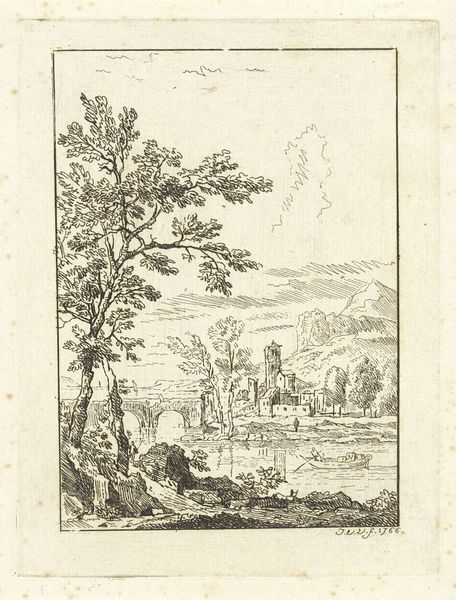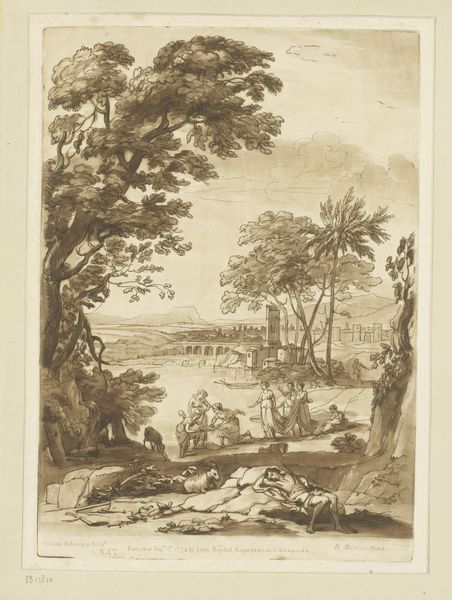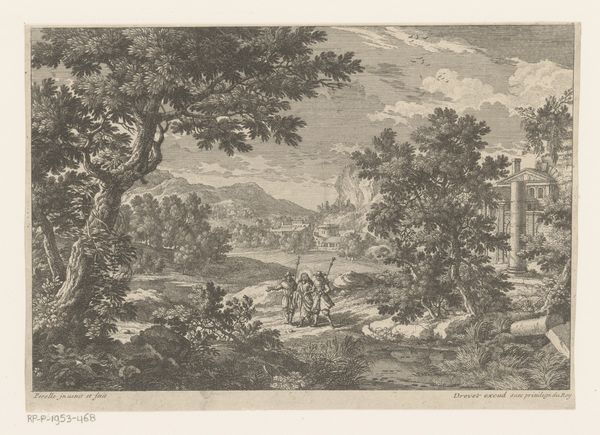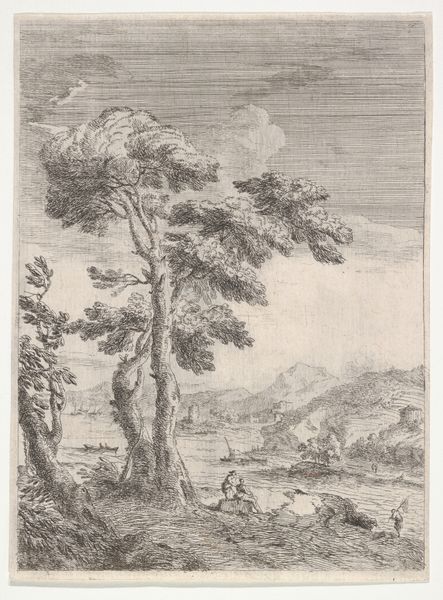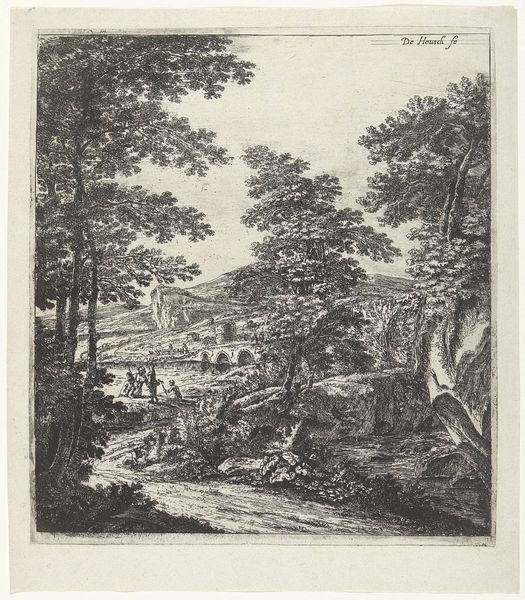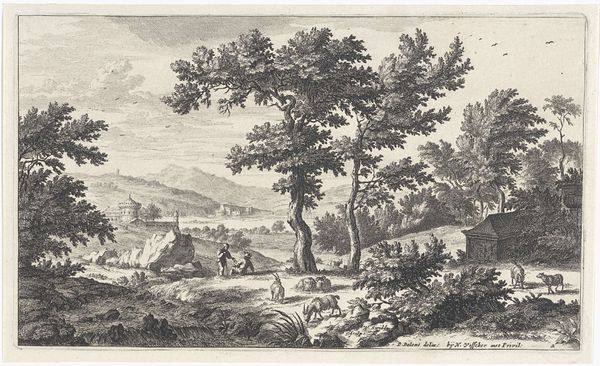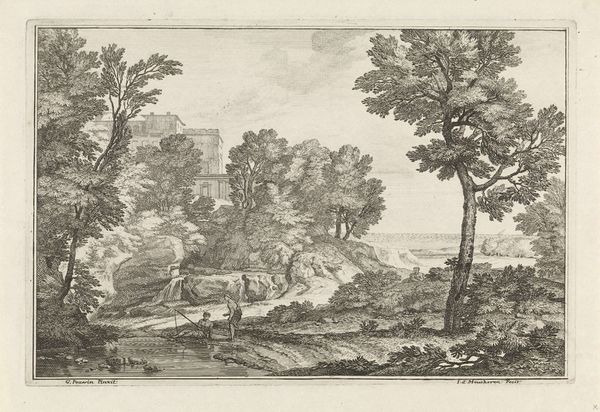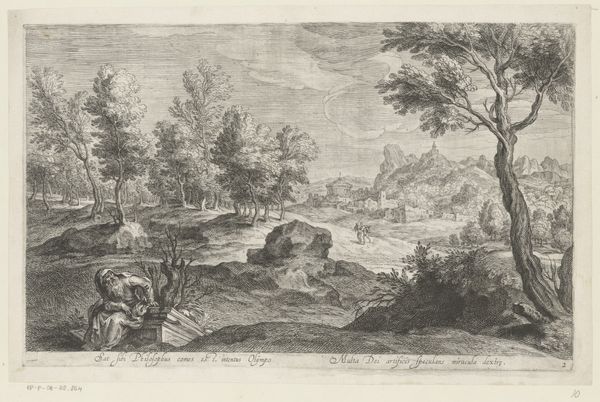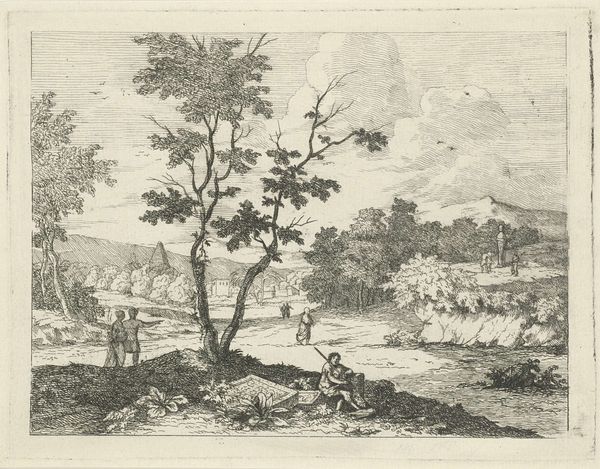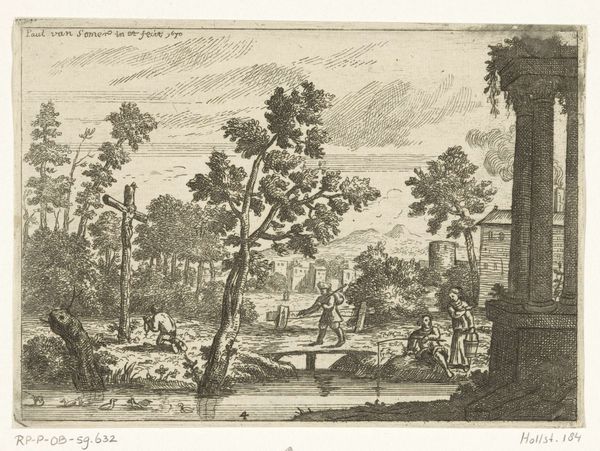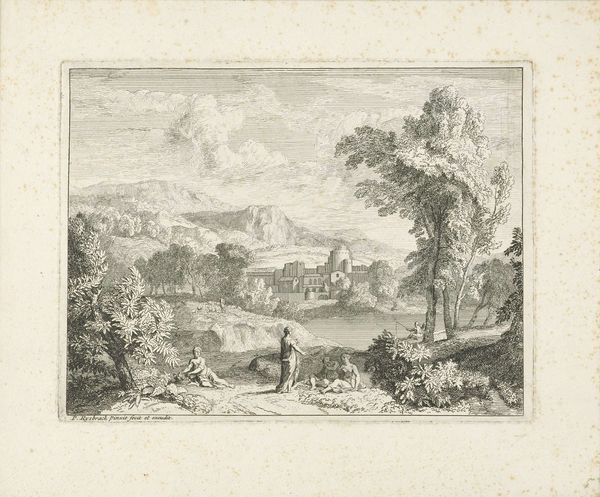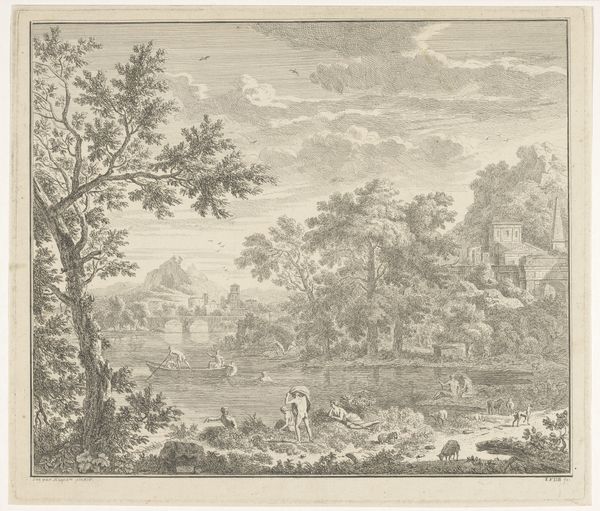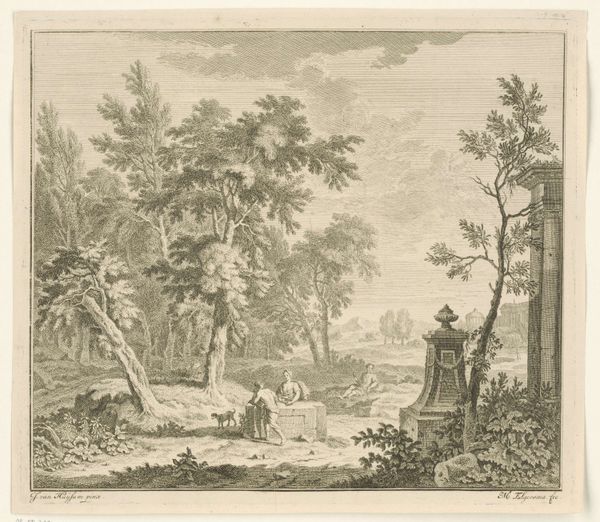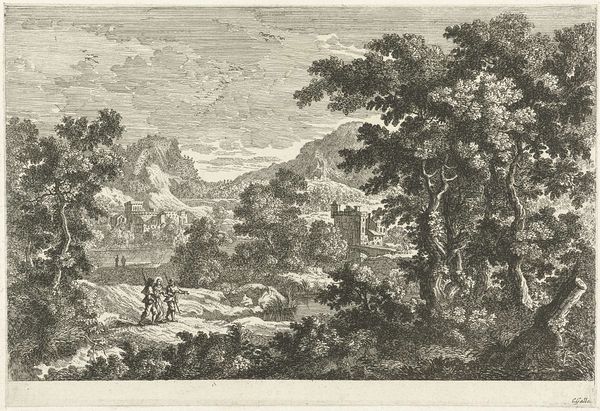
print, engraving
baroque
landscape
form
classicism
line
cityscape
history-painting
engraving
Dimensions: height 303 mm, width 274 mm
Copyright: Rijks Museum: Open Domain
Editor: So, this is "Landschap met visser," or "Landscape with Fisherman," a print made by Michiel Elgersma sometime between 1700 and 1759. It's really detailed. The ruins in the background and the people in the foreground feel like they're part of two completely different worlds, and that makes it seem melancholic to me. How do you interpret this landscape? Curator: I see a dialogue between the past and present, encoded within this serene scene. Notice the fisherman – a timeless symbol of simple existence – juxtaposed against crumbling classical architecture. Consider those ruins, standing as spectral reminders of fallen empires and past glory. Do you recognize any other symbols? Editor: Well, the figures in the foreground, they seem almost carefree, relaxing, and unaware of the grand history that surrounds them. Is that intentional? Curator: Precisely! Elgersma uses this contrast to explore our relationship to the past. These ruins carry powerful emotional and cultural weight. The idyllic scene overlaid upon the decay raises the question: How much of our present is haunted, or informed, by what came before? The symbols work on both conscious and subconscious levels, planting ideas in our collective cultural memory. Editor: I hadn't considered the ruins as a commentary on memory. So, is the image saying that even in our most peaceful moments, history subtly influences our perceptions? Curator: Exactly. The layers of time converge in a single frame. We witness both a celebration of the natural world, but also a sobering reflection of the temporal nature of human achievement. Editor: That adds a whole new layer of depth. Thanks for sharing your insight, I will keep that in mind moving forward. Curator: And I appreciate your observations; they highlighted fresh perspectives. The journey through art is always a shared exploration, isn't it?
Comments
No comments
Be the first to comment and join the conversation on the ultimate creative platform.
